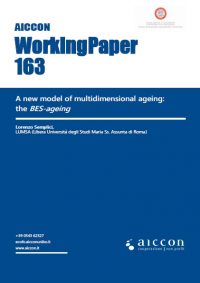163 – A new model of multidimensional ageing: the BES-ageing
Abstract
The primary objective of this work is to construct a model of multi-dimensional ageing—the bes-ageing—based on the domains of the Italian BES (Istat) and using data from SHARE 2007 and 2011. This model was tested using PCA, resulting in four factors: 1) Context Factors, 2) Physical and Psychological Capabilities, 3) Economic and Working Capabilities and 4) Social Participation. These factors allow us to classify ageing under determinants that are institutional (1 and 3), natural (2) and social (4) in nature. Following this, two composite indicators are created (one weighted for component loading and one additionally weighted for citizen preferences) which allow us to focus on regional inequalities (secondary goal of the research) in static (ranking) and dynamic (sigma and gamma analysis) terms. The econometric analysis investigates two relations: 1. the bes-ageing indicators at time t-1 and the emergence of chronic disease between the two waves; 2. the same indicators and life-satisfaction. The results suggest that the model can assist in the reduction of the onset of disease, both directly and indirectly, and in the increase of life satisfaction, to a greater degree than increasing GDP and healthcare expenditures alone. The economic value of bes-ageing in terms of life satisfaction is also evaluated.
Keywords: active ageing, equitable and sustainable well-being, life-satisfaction, regional inequality, composite indicators
JEL numbers: I14 Health and Inequality; I31 General welfare, wellbeing; J17 Value of life 1 Department

